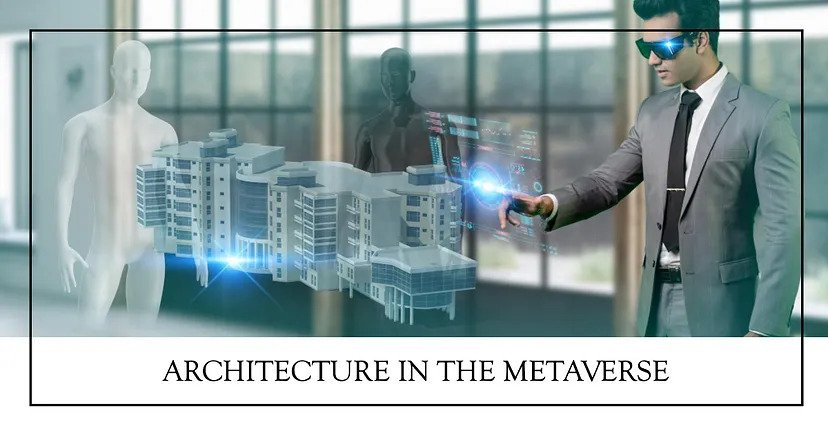What is Metaverse?
Most people might have heard about and would be familiar with the term Metaverse. This is because of its repeated mention in movies like Inception, Ready Player One and The Matrix series. Even the non-sci-fi enthusiasts, must have heard this term being used repeatedly in recent news articles related to Facebook.
The term ‘Metaverse’ was first coined in1992 by Neal Stephenson in his novel ‘Snowcrash’. He used it to describe a futuristic digital realm which would be the next great thing after the internet.
The concept of Metaverse is not a new one but it has recently gained lot of popularity because of online social media site Facebook and its parent company Meta (Previously Facebook). Facebook CEO Mark Zuckerberg created a buzz around the term to use it as a reference to virtual worlds that allow users create their digital version and explore, learn, collaborate, etc. with other users.
Today, Metaverse refers to the integrated network of persistent, 3D rendered virtual world where users can create holographic avatars or characters representing their virtual presence in it. They can work, play, socialize and even buy, sell and rent properties like land, building and NFTs. The concept of Metaverse is similar to the popular mobile and pc games Roblox, Second Life, Sims, etc. where people can literally lead a parallel life in an alternate universe by creating a character to act on their behalf in the game.
How it all started?
Although the term was coined much later in 1987 by a researcher called Jaron Lanier, Virtual Reality (VR) technology was first invented in 1957 by a cinematographer Morton Heilig. He developed the first interactive VR system mechanism that made use of a screen for viewing purpose, audio speakers for sound, devices that diffuse smells and an oscillating fan for touch.
Later, in 68, the first ever AR/VR head-mounted display called ‘The Sword of Damocles’ was invented by a Harvard professor named Ivan Sutherland. It displayed computer-generated graphics that changed perspective according to the user’s movements through a device suspended from the ceiling. Over the years numerous developments and advancements were made in the field of computer-simulation.
The role of Oculus
Fast forward to 2010, Palmer Luckey designed a prototype for what would become a revolutionary technology for Facebook to start it journey towards developing the world of virtual reality. He developed the Oculus Rift virtual reality headset which was later bought by Facebook for $3 billion in 2014.
From Sony unveiling Project Morpheus aka PlayStation VR in 2014, to google introducing a literal cardboard DIY stereoscopic viewer in 2015, hundreds of companies had invested in development of virtual reality products in the time 2014–2018.
Finally in 2018, Oculus introduced the Half Dome — a headset with 140 degree field vision at the Facebook F8 Developer Conference. It is still making tremendous developments and yet have ways to go in the field of cyberspace. Facebook is concentrating tremendous research, innovation and efforts towards unlocking endless possibilities in the realm of augmented reality.
How do they build in the Metaverse?
Although a virtual 3D domain, Metaverse still needs to be filled with elements like landscape, buildings, furniture, fixtures, etc. to ensure a fully immersive and engaging user experience. People require places to go and explore in it and it is here that the competence and expertise of architects come in play. They can employ their extensive knowledge of Rendering Services and designing building structures to design and develop the virtual spaces in this world.
Thanks to the shift in the goals of designing and developing spaces in the Metaverse, there is a sure-shot possibility of a clear distinction between architects and meta-architects. While in traditional architecture, factors such as providing shelter, facilitating day to day activities and adhering to the laws of gravity play a critical role in designing the building structures, meta-architecture isn’t bound by any such limitations so architects can purely focus on creating awe-inspiring geometries purely for aesthetic and creative purpose.
Furthermore, architects in the Metaverse will be required to develop new skills and a shift in perspective. Unlike traditional BIM Services provided through software like Revit where architects create a digital 3D model of the project along with instilling cost, scheduling, sustainability and facility management information within the model, meta-architecture is concerned with integrating the 3D model of the structure with professional knowledge in multiple fields like content design, use interface, game design even character design.
Implications for Architects and Architecture
The mere idea of the presence of a parallel universe where laws of physics, gravity as well as foundational and structural integrity aren’t applicable, is a heaven for architects to explore their creativity and talents to unimaginable extents. From levitating structures to unique and bizarre geometrical elements, the architectural possibilities in the Metaverse are endless.
Additionally, numerous historic monuments that have been destroyed over the years due to constant wars and natural calamities can be accurately rebuilt and preserved in the digital reality of the Metaverse for the future generations to view and admire.
So where do we go from here?
Since the strike of the COVID-19 pandemic in 2019, the world is witnessing a much faster integration between the virtual and the physical reality. To cater to the ever-rising demand for designing innovative spaces in the virtual realm, architects need to update their knowledge and skills like never before to survive and excel in the discipline of digital construction.
The colossal void that will open up for the requirement of content in the Metaverse holds the potential to being about a boom in the construction industry by creating masterpiece of virtual places like museums, malls, stadiums, meeting halls and even a whole city. Architects need to gear up to capitalize on this monumental opportunity that will not only catapult their career towards success but also enhance user experience extensively which would encourage companies to rapidly invest towards the imminent digital future.
















